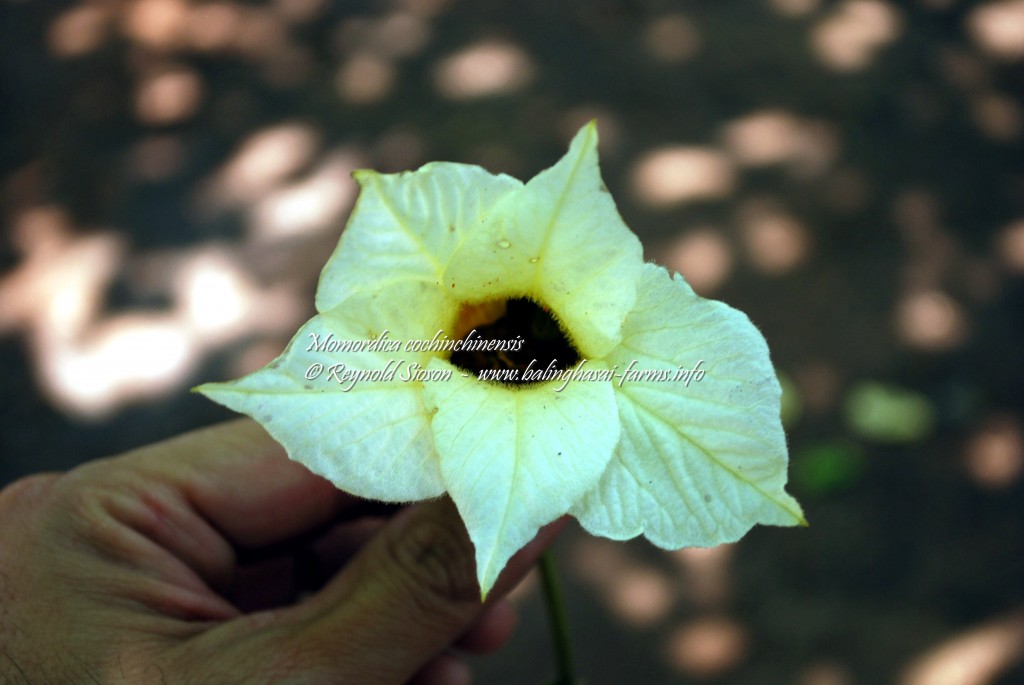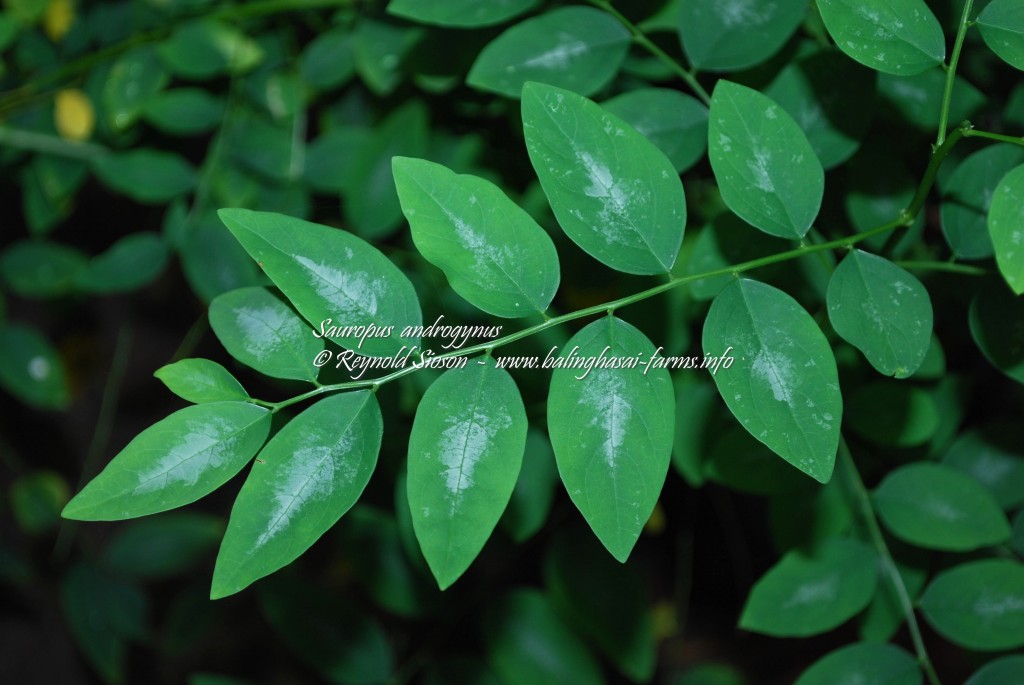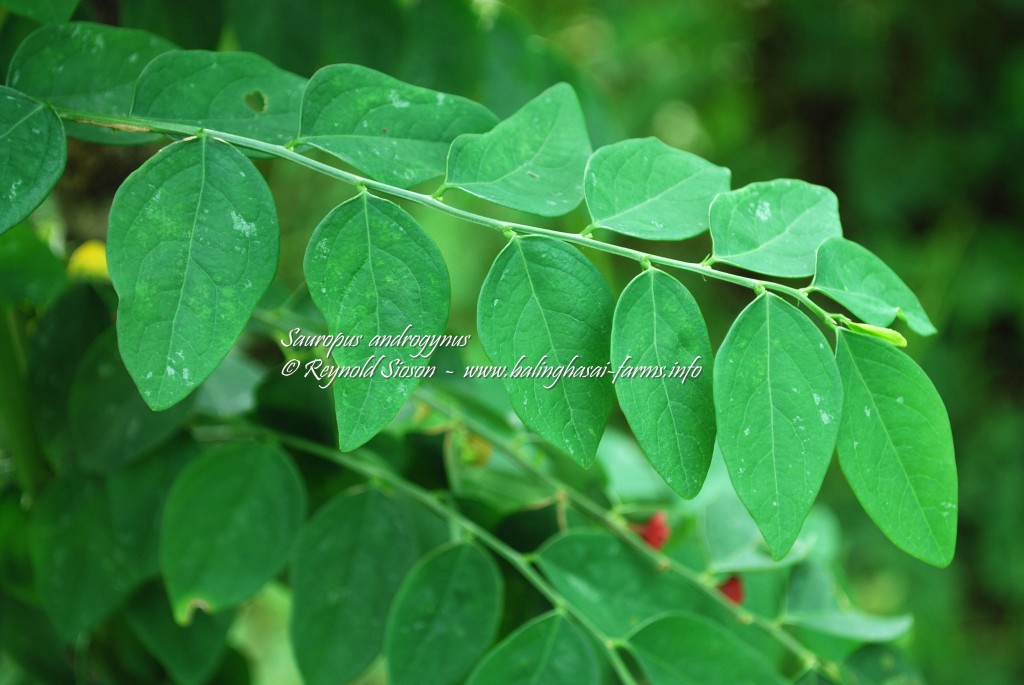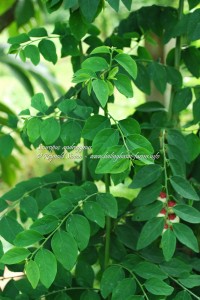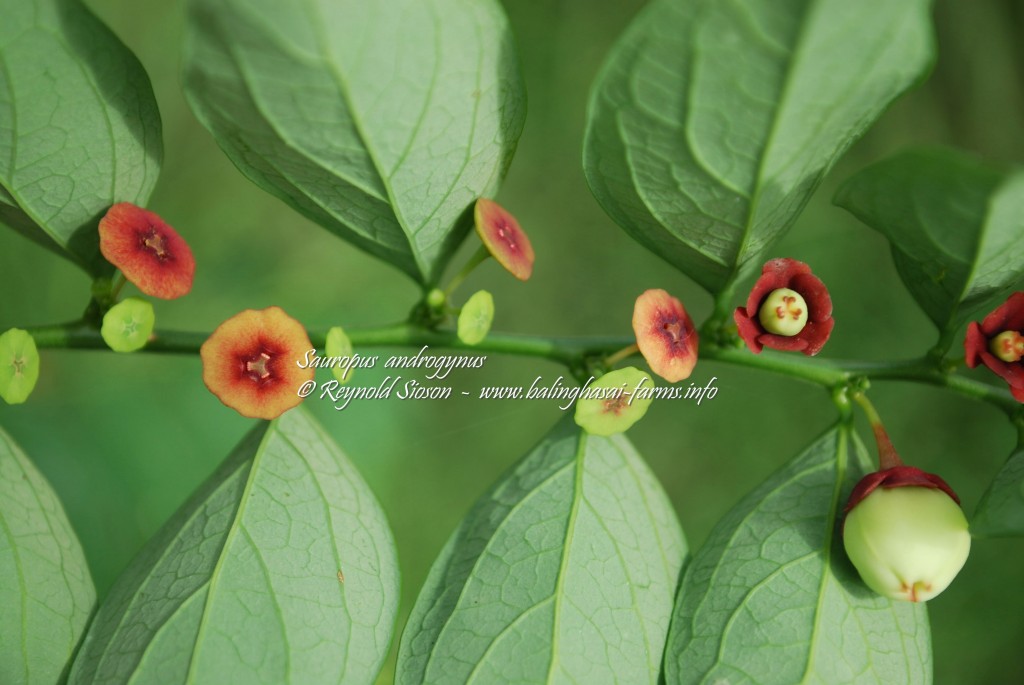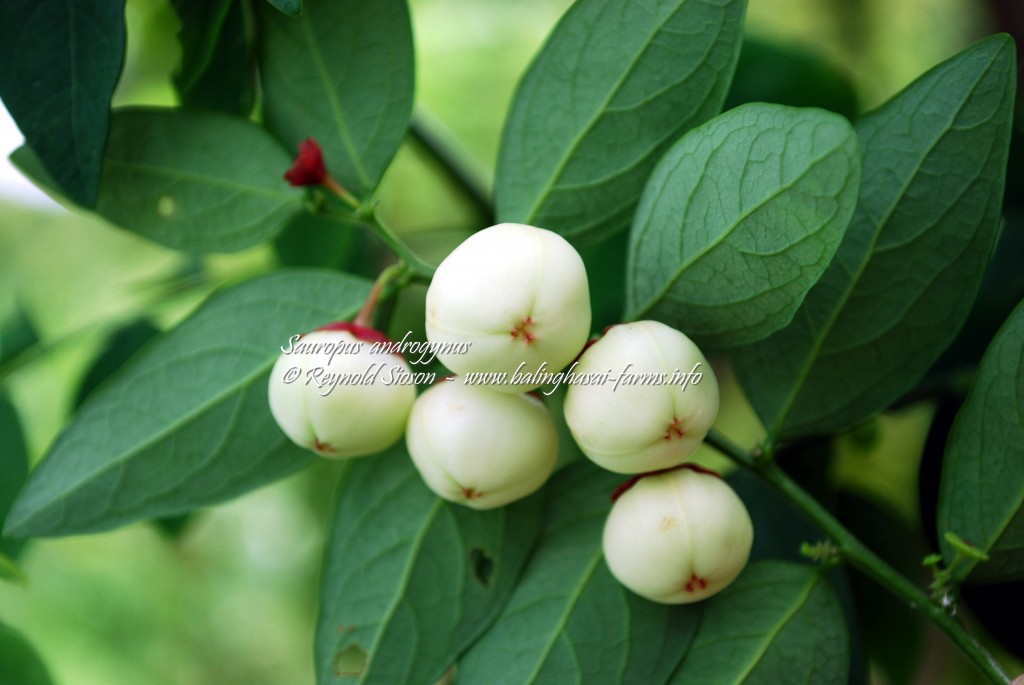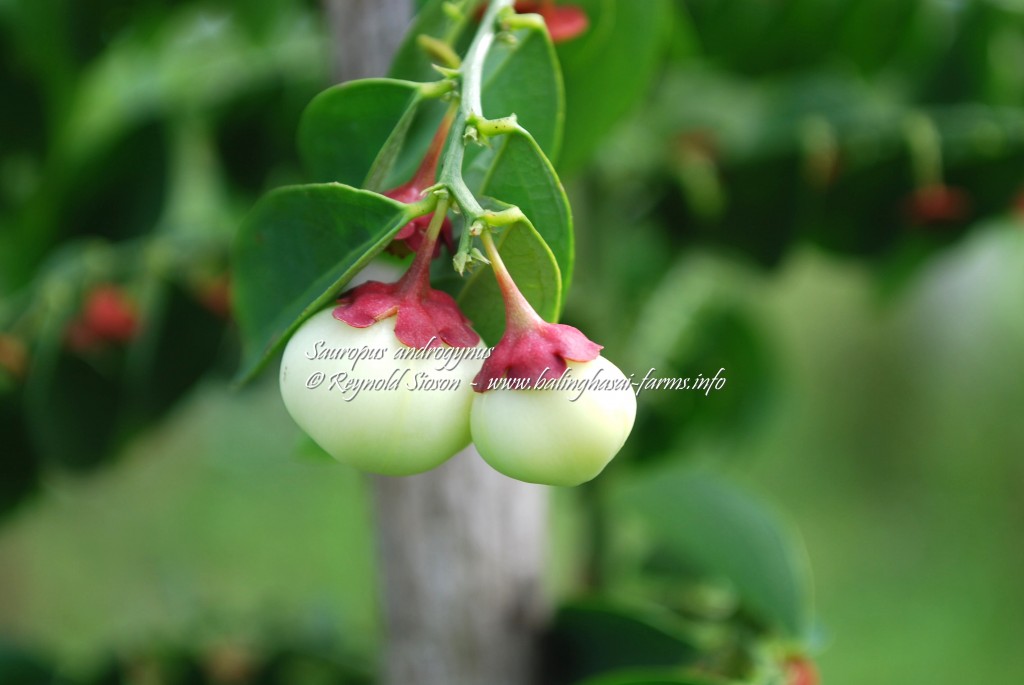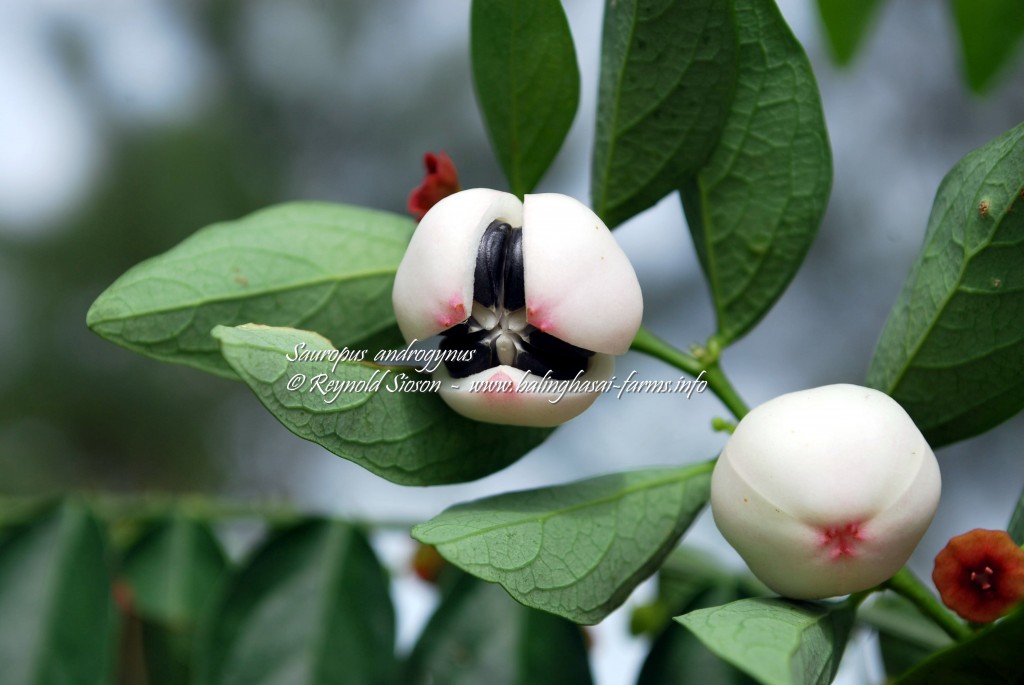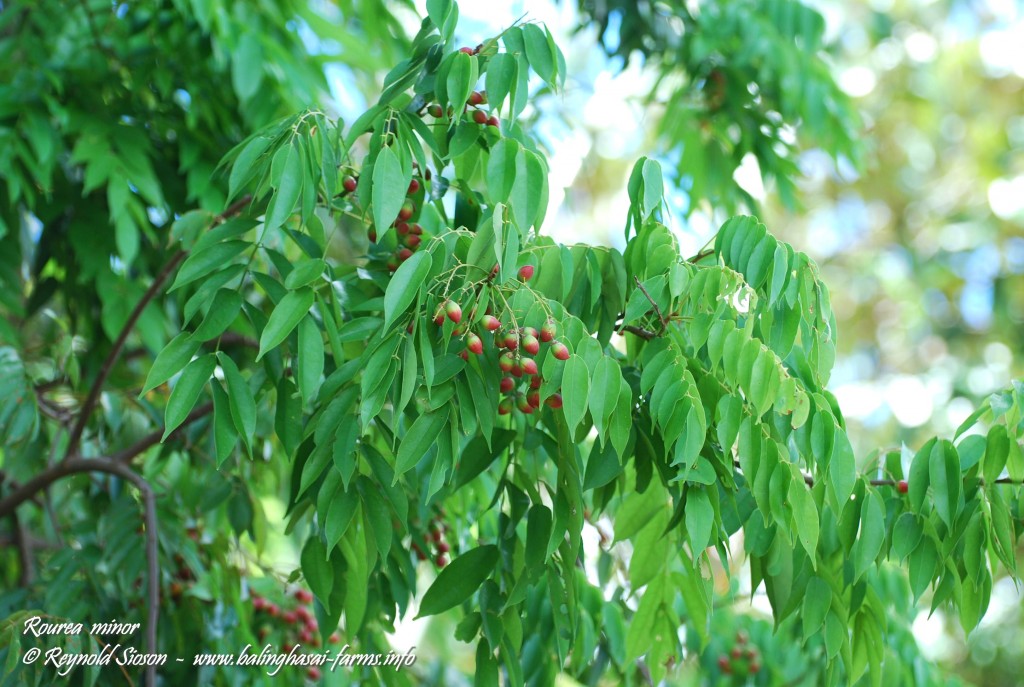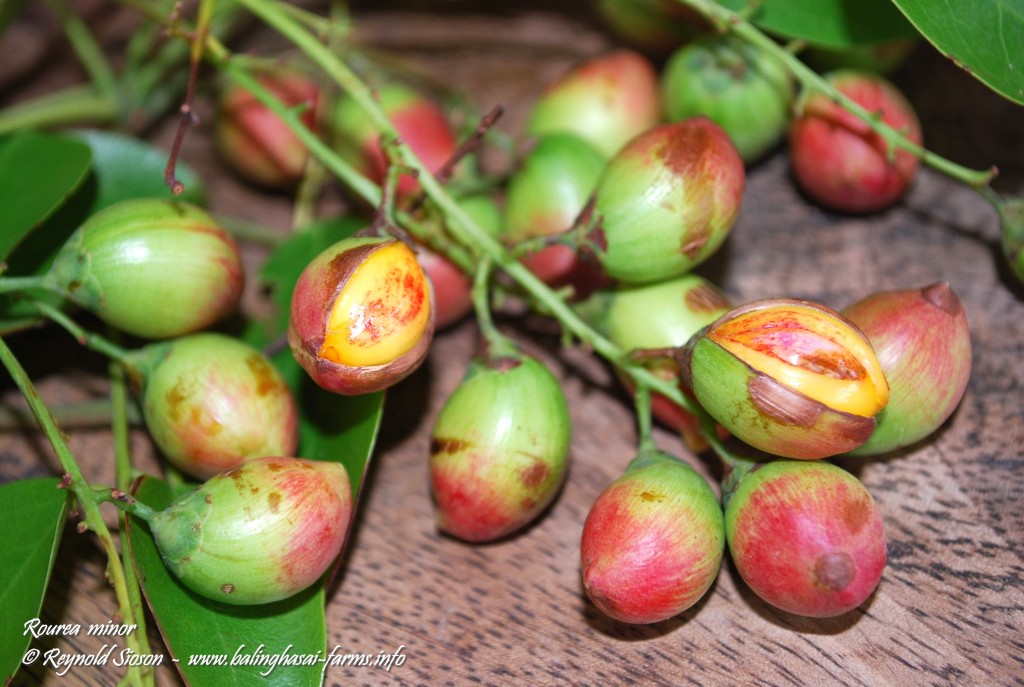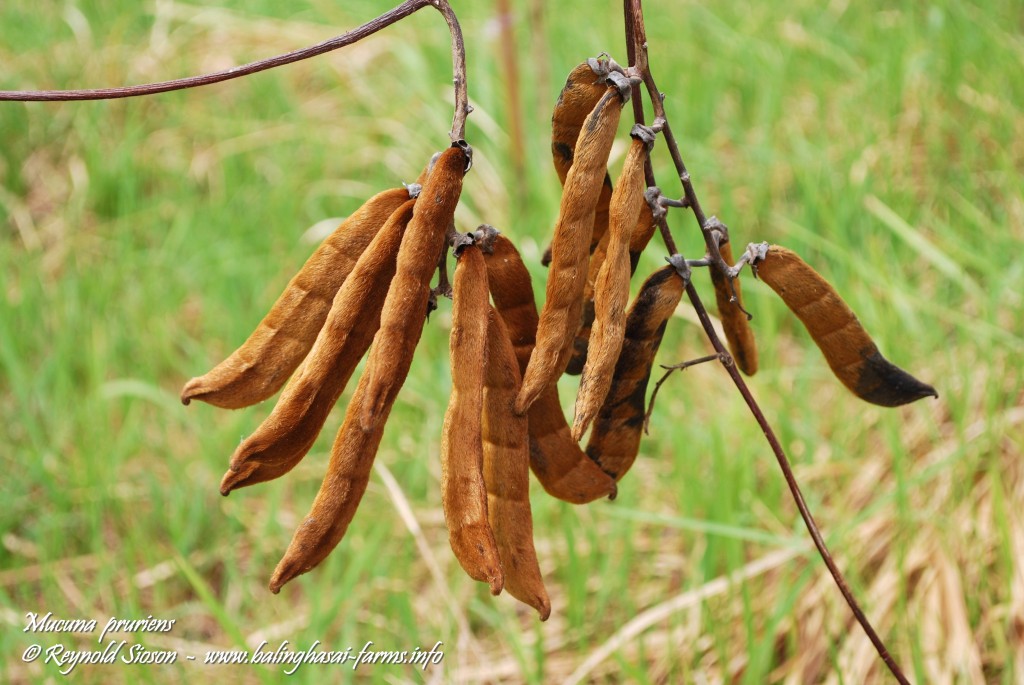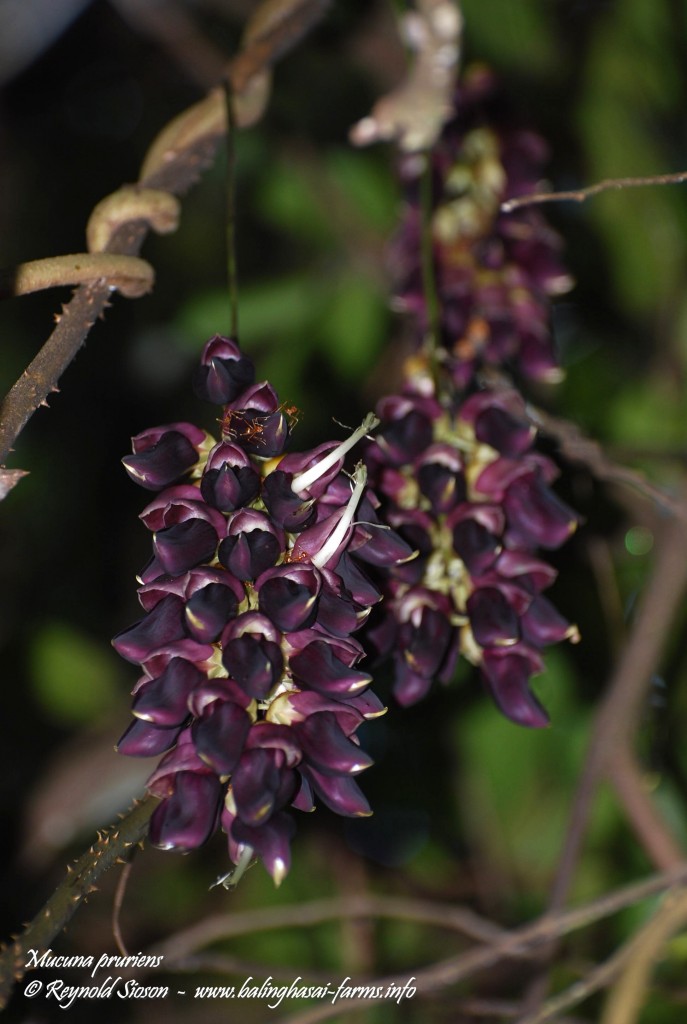I have always wondered why we Filipinos have not exploit the use of our native Momordica cochinchinensis. I’ve heard from friends that they’ve encountered this strange fruit during forest walks and at times in forest clearings near settlements. In Thailand, where it is called Fak Khao, a few pieces of fruits may seasonally be seen in fruit markets. The orange, spiny fruits sometimes weigh from 250g to a kilo per piece and they are a little more expensive than the common fruits. There are small plantations in Surin but few and far between outside of the province. The red aril covering the seed is extracted to make a nutritious beverage; the same is also used in making glutinous rice desserts imparting a natural red color. The young shoots are steamed, dipped in Nam Prik (Thai chili sauce) and eaten with rice.
Specimen height : 6-10 meters
Local names : Patolang-uwak, Balbas-bakiro
Trade names : Gac, Cochinchin gourd
Botanical name : Momordica cochinchinensis
Traits : Dioecious; Drought tolerant; Fast-growing; Full-sun; Low to medium altitude species; Perrenial vine; Woody climber
Recommendations : Backyards; Edible gardening; Farms; Fence climber; Fruit collector’s; Hedgegrow/Screen; Large gardens; Medicinal plant; Pharmacological uses; Plantations; Reclamation; Urban parks; Wildcrafting
 Used for : Young shoots and flowers are eaten as vegetable; The pulp is also eaten; The nutritious aril is used in making specialty beverages, glutinous rice desserts and in the manufacture of dietary supplements; Aril is used as a natural food color; Leaves, roots and seeds have uses in traditional medicine
Used for : Young shoots and flowers are eaten as vegetable; The pulp is also eaten; The nutritious aril is used in making specialty beverages, glutinous rice desserts and in the manufacture of dietary supplements; Aril is used as a natural food color; Leaves, roots and seeds have uses in traditional medicine
Native range : India, Bangladesh, China, Taiwan, Southeast Asia (including the Philippines), New Guinea, Australia
 National conservation status : Not threatened
National conservation status : Not threatened
Further reading :
Flora of China - Momordica cochinchinensis http://www.efloras.org/florataxon.aspx?flora_id=2&taxon_id=200022699
FOXNEWS Gac : Strange Name, Powerful Fruit (Chris Kilham) http://www.foxnews.com/health/2011/02/22/gac-strange-powerful-fruit/
(904)




